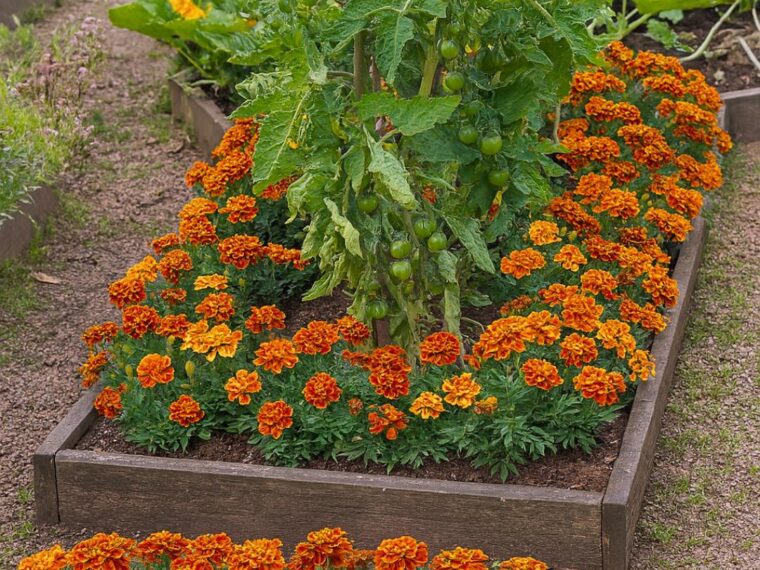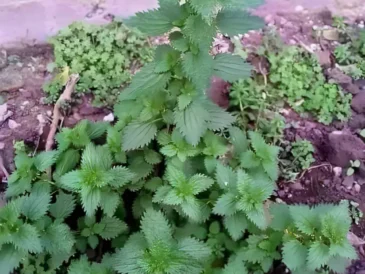Step 1: Choose the right type
French marigolds (Tagetes patula) and African marigolds (Tagetes erecta) are both excellent. Look for hardy varieties that thrive in your USDA growing zone.
Step 2: Plant close to crops
Tuck seedlings between rows or around the perimeter. Space them 6–12 inches apart so they have room to grow and do their work.
Step 3: Keep them blooming
Marigolds love full sun and regular watering. Deadhead spent flowers to encourage new blooms and keep them effective as pest deterrents.
Step 4: Refresh yearly
Replant marigolds each season to maintain their pest-repelling benefits in your soil.
🌿 Benefits Beyond Pest Control
Marigolds aren’t just pest fighters—they’re pollinator magnets. Bees and beneficial insects flock to their bright blooms, helping pollinate your vegetables for bigger, healthier harvests.
Their roots also help improve soil health, and when you rotate them through your beds, you naturally reduce nematode populations over time.
💡 Gardener’s Tip for Maximum Impact
Combine marigolds with other companion planting superstars:
-
Basil near tomatoes to enhance flavor and deter flies
-
Nasturtiums to lure aphids away from tender crops
-
Chives and onions to repel carrot flies and beetles
This layered approach creates a thriving, balanced ecosystem right in your backyard.
✨ Why I’ll Never Garden Without Marigolds Again
What started as a simple experiment turned into one of the easiest, most effective organic gardening hacks I’ve ever tried.
No harsh chemicals. No expensive sprays. Just a few cheerful flowers protecting my crops and helping me harvest more than ever.
If you’ve been overlooking marigolds, consider this your sign. Plant them between your vegetables this season—you might just see the same quiet transformation I did.
🌼 Ready to try it?
Pick up a packet of marigold seeds or visit your local nursery for starter plants. Tuck them among your tomatoes, peppers, or cabbages, and watch your garden come alive—colorful, fragrant, and thriving like never before.
Happy gardening! 🌿





